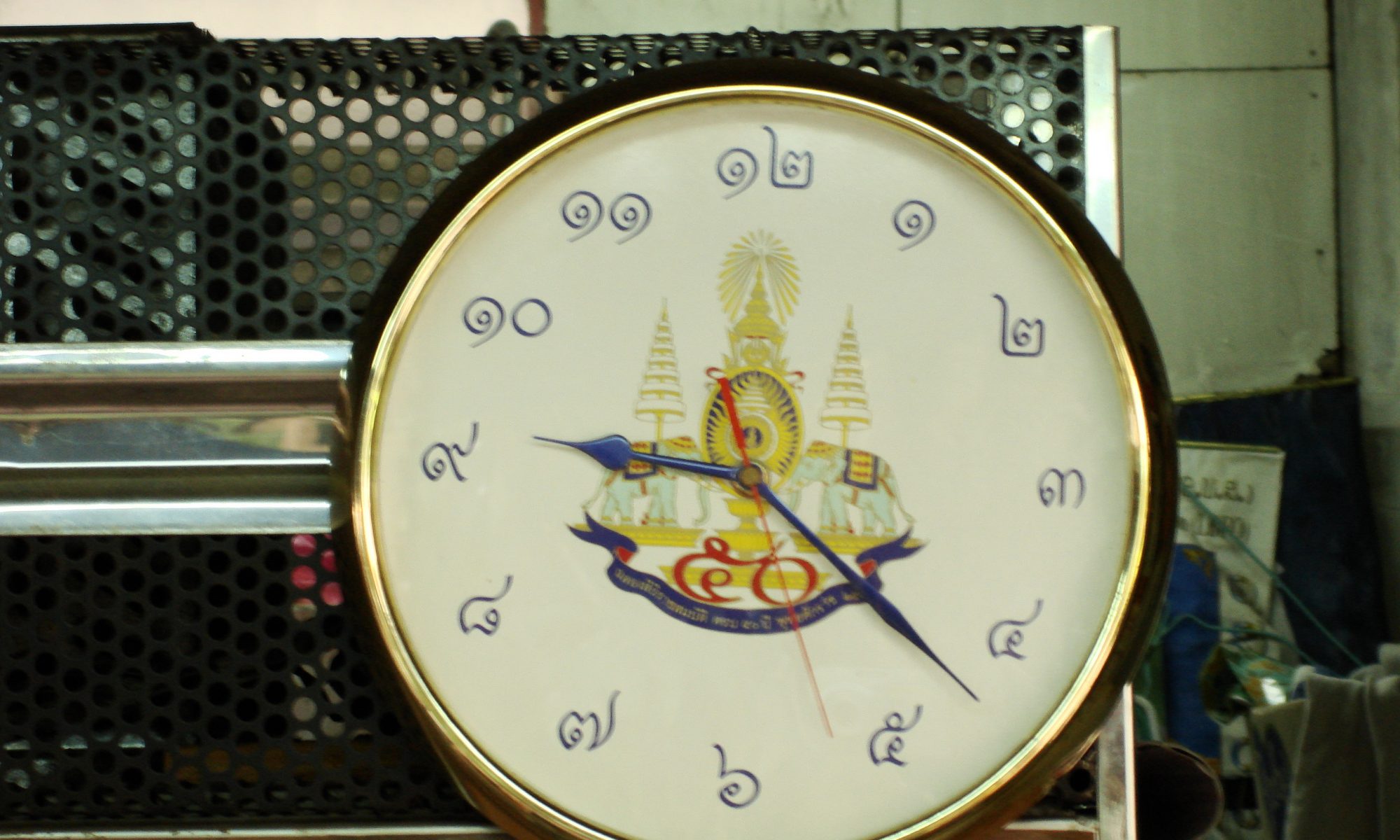In my journey to learn Thai there have been words or phrases I’ve needed since my first day living in Thailand and I learned immediately (like telling a taxi driver to turn left, right or go straight) and there have been others that I thought “That’s a little too complicated for now” and I didn’t remember. One of those “too complicated” concepts for me at first was telling time. I’ve decided to finally tackle it and I’ve done so by doing what any good constructionist would do and built on already existing knowledge. I am a computer programmer who teaches computational thinking skills. So I wrote a program to take a given time and tell the user how to say that time in Thai (both in Thai script and roman transliteration). I’ll break down how it works, then let you play with it yourself. Actually, a lesson I’ve learned from teaching is that if you tell someone you’ll let them play after your lecture, they’ll ignore the lecture and just wait for the part where they get to play. So, here, play away!
Enter a time:
Okay, if you liked that and you’re still here I’m assuming you want to know more about how it works. First of all, the ‘time’ input type will give us a value in the format HH:MM anywhere from 00:00 to 23:59 (12:00 a.m. – 11:59 p.m.). To speak about the time in Thai, you need to know what time of day it is:
เที่ยงคืน (tiâng keun): midnight (00:00-00:59)
ตี (dtee): early hours (01:00-05:59)
เช้า (cháo): morning (06:00-11:59)
เที่ยง[วัน] (tiâng [wan]): (12:00-12:59)
บ่าย (bài): afternoon (13:00-15:59)
เย็น (yen): evening (16:00-18:59)
ทุ่ม (tûm): late hours (19:00-23:59)
The next thing to know is that when saying the hour, we work in mod 6 instead of mod 12 (If you’re unfamiliar with modular arithmetic, keep reading and it should make sense). You know how we count up from 1 o’clock, 2 o’clock, …, 12 o’clock, then start over again at 1 o’clock p.m.? Well, in Thai we can count up from 1 o’clock, 2 o’clock, …, 6 o’clock and go back to 1 o’clock. So you “roll over” 3 times in a day instead of just once (a.m. to p.m.). One thing to note is that Thai can be a pretty forgiving language. If you say 7 in the morning instead of 1 in the morning, it will still make sense.
Some more important words:
โมง (mong, long ‘o’ sound like in go or row): hour
นาที (na tee): minute
Also, the numbers 1-59. I’ll do a separate post about numbers in Thai (Until then, here’s a good reference). Here are the first 6 since they’ll be the most common since we need them for the hours:
หนึ่ง (neung): one
สอง (song): two
สาม (saam): three
สี่ (see): four
ห้า (ha): five
หก (hok, again, long ‘o’ sound): six
Saying the hour portion is different during the different parts of day. For noon and midnight, we just say เที่ยงคืน/เที่ยง. Early hours it’s the time of day then the hour number (1 .a.m. = ตีหนึ่ง ). In the morning and evening it’s [hour number] + โมง + [time of day] (6 a.m. = หกโมงเช้า, 6 p.m. = หกโมงเย็น). Afternoon, it’s บ่าย + [hour number] +โมง (3 p.m. = บ่ายสามโมง ) but you don’t have to put the number if it’s one (1 p.m. = บ่ายโมง ). Late hours, it’s [hour number] + ทุ่ม (11 p.m. = ห้าทุ่ม).
Minutes are easy enough, unless you’re at minute zero (*:00), just add the number and the word for minutes (2:03 p.m. = บ่ายสองโมงสามนาที: bai song mong saam na tee ). Now, just like in English, we could say things like ครึ่ง (kreung: half) instead of *:30, or 5/10/15 ’til the next hour but I haven’t included those in this program. We could also say [hour number] + [the Thai word for clock] the same way you use “o’clock” in English but you need to switch to a 24 hour system (ex. 6 o’clock am = หกนาฬิกา: hok na lee gah but 6 o’clock pm would be “18 o’clock” = สิบแปดนาฬิกา: sib bad na lee gah ).
By coding this up, I had to think about the patterns and rules for when to say what when talking about time in Thai which has definitely helped my understanding. Thanks for checking it out!
Featured Image originally posted on Flickr by Jorge Láscar licensed under the Creative Commons Attribution 2.0 Generic license.


